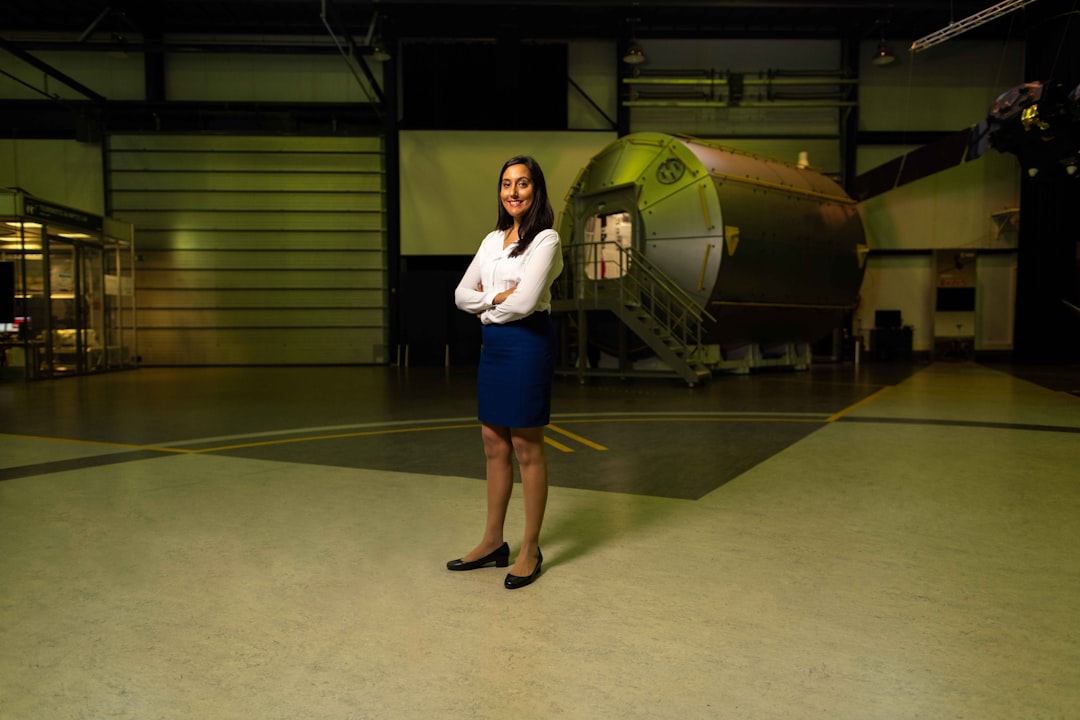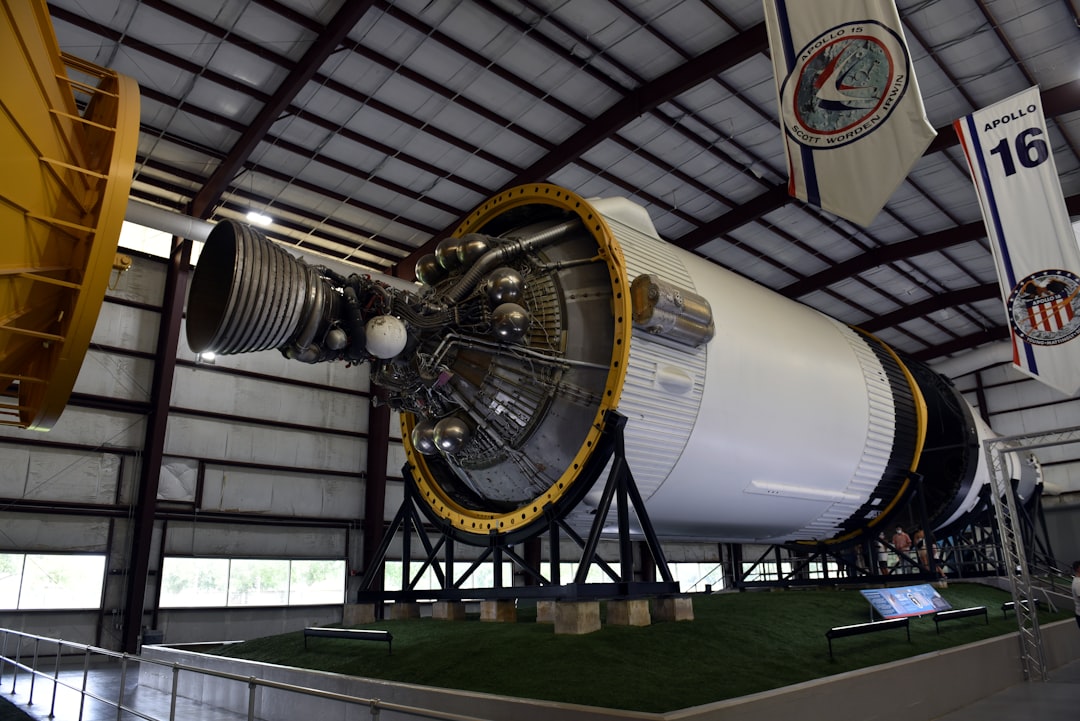

Engage prospects with a scan and streamline customer engagement with FREE QR code marketing tools by Sona – no strings attached!
Create a Free QR CodeFree consultation

No commitment

Engage prospects with a scan and streamline customer engagement with FREE QR code marketing tools by Sona – no strings attached!
Create a Free QR CodeFree consultation

No commitment
Aerospace research organizations are at the epicenter of technological advancement, relentlessly pursuing new frontiers in aerospace engineering, space exploration, and aviation innovation. Yet even with world-class research and facilities, it is increasingly difficult to maintain stakeholder engagement and retain top talent. Prospect signals are scattered across conferences, lab tours, campus events, and publications. Many institutions miss high-value prospects who never formally express interest and lack visibility into who is engaging with physical or digital assets. Traditional tactics like static flyers, printed manuals, and conference brochures do not capture enough data to sustain meaningful interactions with scientists, staff, partners, and students.
Modern QR code strategies change this equation. By turning physical assets into gateways to dynamic content and measurable actions, QR codes bridge offline-to-online gaps and capture engagement signals that would otherwise be lost. Whether on a poster, safety sign, badge, or envelope, a scan can trigger immediate actions and layered data collection. This enables organizations to follow up intelligently, personalize the next touch, and prove impact with rich analytics.
This guide explains how aerospace research organizations can use QR codes to boost retention, streamline engagement, and differentiate their programs. You will learn where to deploy QR codes across the research lifecycle, how to connect them to your CRM and analytics, and how to transform anonymous attention into long-term relationships backed by measurable outcomes.

Retention in aerospace research depends on sustained, high-quality engagement at key moments across the journey: onboarding for new hires and interns, safety training for lab personnel, collaboration with industry partners, and networking at conferences. When those touchpoints are analog, episodic, or untracked, interest fades and valuable relationships go cold. QR codes serve as digital connectors that link each physical interaction to an online action and a measurable data trail, making it easier to continue the conversation and demonstrate value.
Consider a few common friction points. Onboarding packets are often thick binders that new hires skim once and set aside. Replace them with a QR-enabled microsite that hosts video orientations, key policies, and checklists, then track scans to see which resources get attention and who might need support. Conference interactions frequently end with an exchange of business cards that never make it into a CRM. A vCard QR on a poster or badge adds contacts directly to a phone and logs the interaction instantly. Manual sign-in sheets for lab tours create poor data quality and slow follow-up. A QR check-in facilitates accurate attendance, triggers automated thank-you emails, and invites visitors to subscribe for updates.
Adopting this approach turns every printed asset into a live touchpoint that feeds a retention engine. You can segment audiences by interest, automate tailored follow-ups, and ensure even short-lived interactions are captured and reactivated. The result is a tighter feedback loop between physical programs and digital engagement that helps reduce churn among researchers, strengthens industry partnerships, and keeps high-potential students and interns connected to your organization.

Aerospace research is deeply physical: wind tunnels, clean rooms, engine test stands, and flight ranges demand on-site engagement. Yet the outcomes organizations seek are digital and long term: applications, partnerships, sponsorships, grant collaborations, and community support. QR codes are built for this reality. They convert a moment of curiosity at a poster or sign into a measurable action that you can track, analyze, and nurture over time.
Beyond general benefits, these capabilities map directly to aerospace materials and moments. Conference proceedings and technical posters can link to datasets, videos, or preprints. Facility signage can deliver real-time safety updates and collect acknowledgments. Aerospace education outreach can invite students to apply, register, or subscribe on the spot. In every case, a scan becomes the first step in a structured engagement plan that supports retention and program growth.

Aerospace research organizations should deploy a mix of QR formats tailored to their objectives. Choosing the right format ensures the user action aligns with the context and yields measurable outcomes.
Match the format to the task. For networking-heavy environments, vCards and pre-filled messages remove friction. For safety and compliance, web links to policy pages and acknowledgment forms are best. For recruitment, web links to application portals with embedded tracking enable precise attribution. With Sona QR, you can manage all of these formats centrally and keep your tracking consistent across teams and locations.

Growth hinges on capturing intent where it first appears. In aerospace research, many promising moments happen in hallways, labs, and conference floors, not in inboxes. Place QR codes where the gap between interest and action is usually widest.
A strategic placement plan makes offline engagement measurable. Combine clear calls to action with dynamic codes to see which materials drive the most interest, then double down on those channels with more targeted content and follow-up.

Most engagement drops do not occur because people are uninterested. They occur because the next step is unclear, time consuming, or unavailable in the moment. QR codes solve this by making the next action obvious and effortless, while giving teams the data needed to follow through.
In each scenario, QR data reveals where interest accelerates and where it stalls. That visibility lets teams craft better content, personalize outreach, and allocate resources to the highest-yield activities, all of which support stronger retention and growth.
Every scan is a signal. It captures context like location, time, and device, as well as implicit intent based on the destination. By deploying multiple QR codes across the research lifecycle, you can automatically segment audiences and drive smarter retargeting and nurture programs. See intent-driven retargeting.
With Sona QR, each QR becomes a smart entry point. Codes can automatically append UTM parameters, assign tags, and populate lists in your CRM or marketing automation platform. This ensures that from the first scan, each person is placed on a path that matches their level of interest and their relationship to your organization.
QR codes connect your physical footprint to your digital funnel. The biggest gains happen when you integrate codes into all the places your audiences already see your brand and research content, then orchestrate follow-ups that reflect the context of the scan.
When connected to a centralized platform like Sona QR, you can manage all codes in one place, apply consistent tracking parameters, and sync scan activity with your CRM and ad platforms. This turns QR codes from isolated tools into a core component of a cohesive, multi-channel engagement strategy.
Executing QR programs in aerospace research requires clarity of purpose, thoughtful design, and rigorous measurement. Use the following steps to plan and launch with confidence.
Start by defining a single, concrete outcome that aligns with retention or growth. For example, your goal might be to increase graduate program inquiries from conference attendees, boost safety acknowledgement rates in a new facility, or generate qualified partner meetings during an industry expo.
Select the format that best fits your goal, and use dynamic codes whenever you need flexibility or tracking.
The best QR codes are visually consistent with your brand, easy to scan, and crystal clear in their promise.
Place your codes where intent is strongest and where the environment supports scanning comfortably and safely.
Measurement is what turns QR codes into a retention engine. Treat your first launch as the baseline for iterative improvement.
In aerospace organizations, decision cycles are complex and involve multiple stakeholders. It is not enough to know that someone scanned a code. You need to understand how that engagement influenced pipeline, enrollment, grant outcomes, or safety compliance. A robust tracking stack connects every scan to downstream results.
Sona QR and Sona.com are built to make this easy. Sona QR captures scan-level detail, manages dynamic destinations, and syncs seamlessly with tools like HubSpot and Salesforce. Sona.com layers on identity resolution and multi-touch attribution so you can see how QR engagement contributes to pipeline and closed-loop outcomes. Together, they turn your offline signals into actionable insights you can trust and report on.
Expanding QR code impact requires discipline and creativity. Focus on practices that drive scan rates, improve data quality, and reduce follow-up friction.
By institutionalizing these practices, aerospace research organizations can maintain consistent measurement, learn quickly, and steadily improve the experiences that matter most for retention and growth.
Aerospace research organizations thrive on curiosity and collaboration. QR codes harness both by turning every physical surface into a digital entry point and every moment of interest into a measurable action. When embedded across posters, facilities, events, and mailers, QR codes close the offline-to-online gap that often causes promising relationships to stall. The payoff is higher retention of students, staff, and partners, better safety compliance, more efficient recruiting, and a clearer line of sight from engagement to outcomes.
With a platform like Sona QR, you can launch, track, and optimize QR programs at scale. Dynamic codes keep content fresh, analytics reveal what works, and CRM integrations ensure that no signal is lost. Start by instrumenting one or two high-impact moments such as a flagship poster session or a new lab opening. Then expand to recruitment, stakeholder communications, and community outreach. Start creating QR codes for free. Each scan becomes an invitation to continue the conversation, deepening connections that sustain your mission and accelerate innovation.
QR codes have revolutionized aerospace research organizations by transforming complex data sharing and retention strategies into seamless, measurable interactions. Whether it’s enhancing knowledge retention among teams, streamlining access to critical research materials, or fostering collaboration across departments, QR codes replace cumbersome workflows with instant, mobile-friendly solutions that capture real-time engagement and drive innovation forward.
Imagine instantly tracking which training modules or research updates resonate most, enabling you to optimize retention and accelerate project outcomes. With Sona QR, you can create dynamic, trackable QR codes in seconds, update content without reprinting materials, and link every scan directly to performance metrics. No wasted effort, no missed insights—just smarter, more impactful research retention strategies.
Start for free with Sona QR today and turn every scan into deeper engagement, enhanced retention, and measurable progress in aerospace research.
Aerospace research organizations are known for pursuing technological advancement in aerospace engineering, space exploration, and aviation innovation.
They conduct research across engineering, space exploration, and aviation innovation, enabling breakthroughs and supporting collaborations, partnerships, and educational outreach.
They focus on aerospace engineering, space exploration, aviation innovation, safety protocols, recruitment, and community outreach.
The article does not specify particular countries but discusses aerospace research organizations globally in academic, industry, and government contexts.
The article does not detail specific breakthroughs but emphasizes continuous innovation and rapid changes in aerospace plans requiring agile content updates.
QR codes connect physical assets to digital content, capturing engagement data, facilitating follow-ups, increasing retention, and bridging offline-to-online gaps.
By linking key touchpoints like onboarding, safety training, and conferences to measurable digital interactions, QR codes enable personalized follow-ups and sustained engagement.
Common types include web links to documents or videos, vCards for contacts, pre-filled emails or SMS, Wi-Fi access codes, app download links, and dynamic QR codes for flexible campaigns.
QR codes should be placed at conferences, research publications, labs and facilities, recruitment materials, direct mail, and stakeholder packets.
They deploy multiple QR codes tagged by journey stage, action type, location, and timing to automatically segment audiences and sync data with CRM and ad platforms for targeted follow-ups.
The steps include choosing a clear use case, selecting the appropriate QR code type, designing and testing the code, deploying across channels, and tracking and optimizing performance.
Tracking captures detailed scan data, attributes engagement to specific materials, links scans to contacts, automates follow-ups, and analyzes the full engagement journey to measure impact.
Best practices include using unique codes per asset, adding UTM parameters, automating follow-ups, educating users on scanning benefits, and creatively deploying codes in high-traffic areas.
QR codes link to safety checklists and protocols at lab entrances and equipment stations, track acknowledgments, identify training gaps, and improve compliance monitoring.
QR codes on flyers, career fair displays, and campus signage capture scans linked to interest forms, enabling recruiters to segment candidates and send tailored follow-ups.
QR codes share dashboards, impact stories, and pledge forms during briefings and events, allowing teams to track interests and tailor future communications.
They incorporate QR codes into brochures, social media campaigns, direct mail, digital signage, and events, coordinating scan data with CRM and marketing platforms for cohesive outreach.
Use Sona QR's trackable codes to improve customer acquisition and engagement today.
Create Your FREE Trackable QR Code in SecondsJoin results-focused teams combining Sona Platform automation with advanced Google Ads strategies to scale lead generation

Connect your existing CRM

Free Account Enrichment

No setup fees
No commitment required

Free consultation

Get a custom Google Ads roadmap for your business






Launch campaigns that generate qualified leads in 30 days or less.
